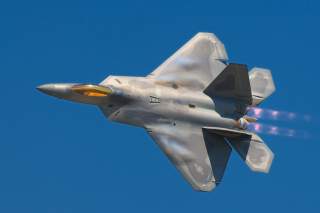How the U.S. Military Would Strike Iran: Everything You Need to Know
5 weapons of war that could do it.
This is bad news for Iran and its A2/AD strategy. One of Tehran’s most important A2/AD capabilities is the use of massive fleets of lightly armed speedboats to “swarm” American naval vessels operating in the Persian Gulf. In addition, Iran has also invested heavily in Unmanned Aerial Vehicles (UAVs). While these will be utilized for multiple ends, there is good reason to think Iran may use some of them to swarm U.S. platforms.
In both cases, Iran seeks to use the many and cheap to overcome the few and expensive. That is, swarming seeks to use basic arithmetic to overwhelm America’s superior military systems. To do this successfully, swarming must mirror missiles in being overwhelmingly cheaper to use offensively than to defend against.
Laser systems seek to deny swarming tactics this advantage. Instead of defending against swarming tactics with expensive anti-ship and anti-air missiles, lasers will allow America to destroy large swarms of speedboats or drones cheaply. At $1 per shot of a directed energy source, the Navy has said the cost of these laser systems is about 1/100th of existing missile systems. Equally important, unlike missiles—where space constraints limit the number warships they can carry—lasers never run out. As Chief of Naval Research Rear Adm. Matthew Klunder said of lasers last year, "This is a revolutionary capability…. this very affordable technology is going to change the way we fight and save lives."
Not surprisingly, the Navy is currently testing the LaWS in the Persian Gulf aboard the USS Ponce. That ship features a gun that uses “electromagnetic force to send a missile to a range of 125 miles at 7.5 times the speed of sound.” Although lasers still face crucial limitations, such as their ability to operate in less than perfect weather conditions, expect the Navy to work out the kinks in the years ahead.
When it does, Iran’s day of reckoning may be near.
Image: Creative Commons.
This first appeared in 2015.

